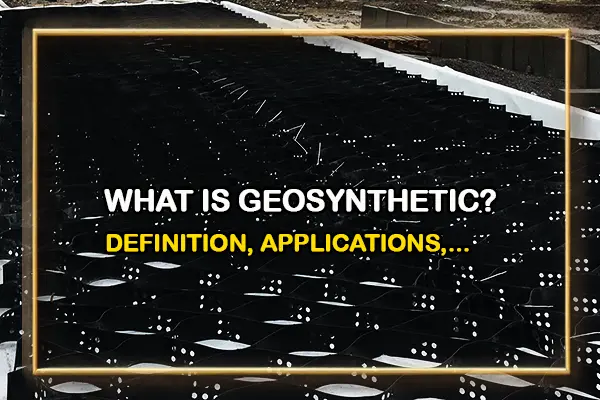What is geosynthetic?
The word geosynthetic is made up of two parts: “Geo” and “Synthetic.” The word “Geo” is used when it refers to the earth, and “Synthetic” is used when the material is artificial and man-made. Geosynthetic refers to products that solve geotechnical and soil problems.
Geosynthetic Products are typically made from polymers such as polypropylene, polyester, or polyethylene. They come in various forms, including geotextiles, geogrids, geomembrane sheets, geonets, geocells, geogrids, and geocomposites. They are used for a wide range of engineering applications.
Applications of geosynthetics
All types of geosynthetics are produced to lessen the impact water has on the soil. Geosynthetics can be buried underground, underwater, and built into walls. It is a cost-effective alternative to other expensive stabilization methods. Because of their durability, almost every manufacturing and building process can use geosynthetics. Here are some of the applications for geosynthetics in civil and geotechnical engineering:
- Road and Pavement Construction: Geosynthetics are used in road and pavement construction to improve the performance and longevity of the infrastructure. They are used for functions such as separation, filtration, reinforcement, and drainage.
- Retaining Walls and Slopes: Geosynthetics play a vital role in the construction of retaining walls and slopes. They reinforce the soil, enhancing stability and preventing erosion.
- Landfills and Containment Facilities: Geosynthetics are extensively used in landfill construction and containment facilities. Geomembranes act as impermeable liners to prevent the seepage of contaminants into the soil or groundwater.
- Erosion Control: Geosynthetics are employed for erosion control in various applications. They are used to stabilize slopes, embankments, and riverbanks, preventing soil erosion caused by wind or water.
- Drainage Systems: Geosynthetics are used in drainage applications to manage water flow and control pore pressure. Geotextiles, geonets, or geocomposites with drainage cores are employed to facilitate efficient water drainage and prevent water buildup in various structures such as roads, sports fields, and landfills.
- Hydraulic Structures: Geosynthetics find applications in hydraulic structures such as dams, canals, reservoirs, and ponds. They are used for filtration, erosion control, and seepage control.
- Coastal and Shoreline Protection: Geotextile tubes or geosynthetic containers filled with sand or soil act as breakwaters or revetments. Geotextile sand containers (geotextile bags) are also employed for beach nourishment and dune stabilization.
- Mining and Environmental Applications: Geosynthetics are extensively used in mining operations for functions such as separation, drainage, erosion control, and containment.
Conclusion
Geosynthetic products play a crucial role in geotechnical and civil engineering applications. They offer a wide range of functions, including reinforcement, separation, filtration, drainage, erosion control, containment, and protection.
Source:

